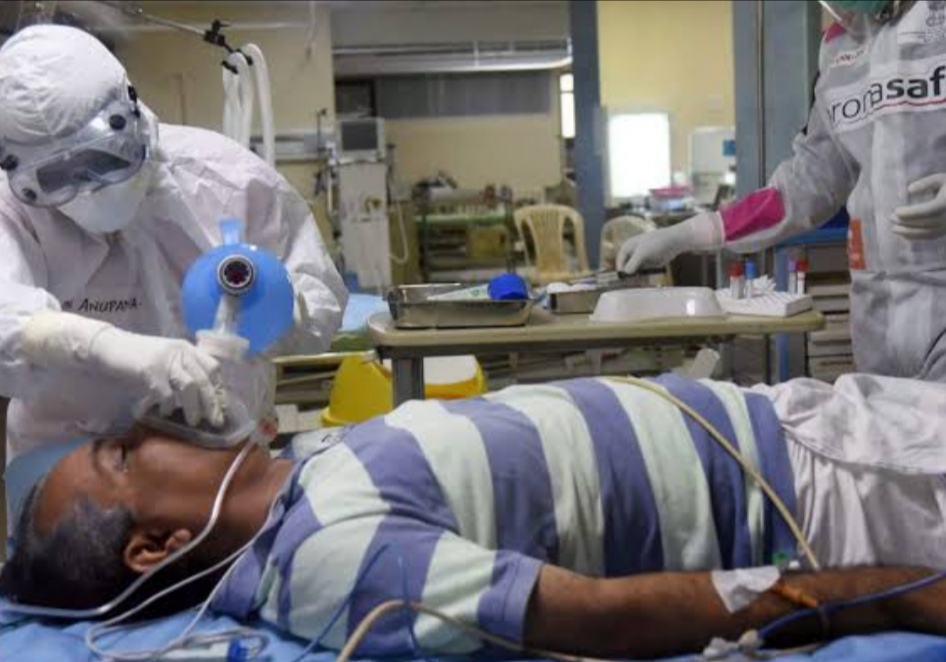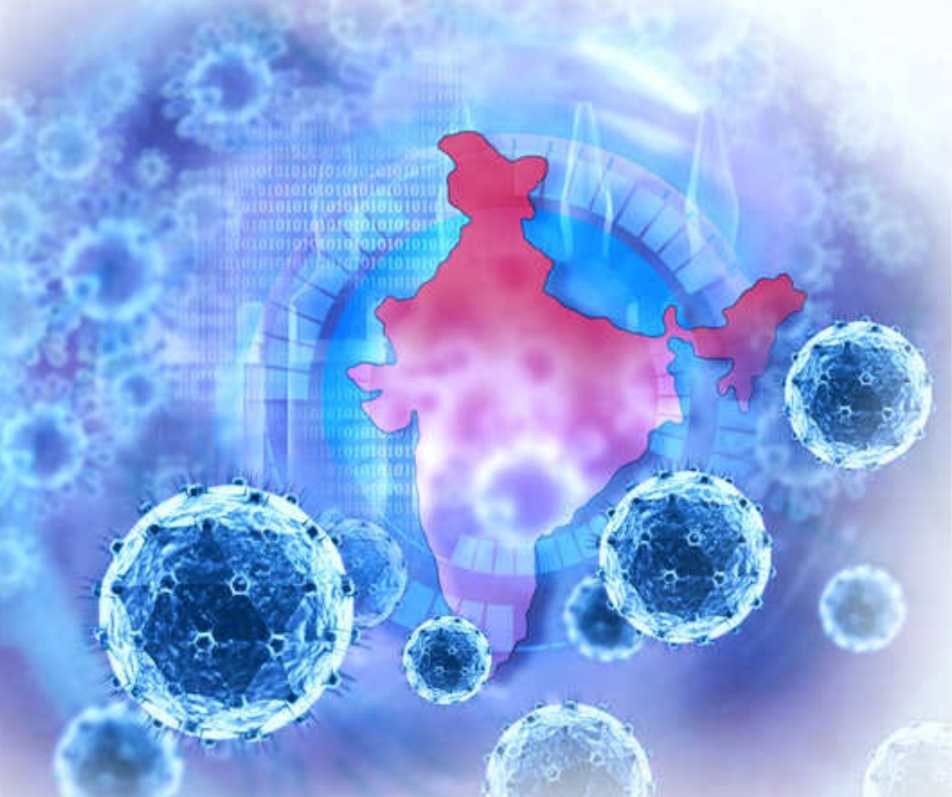By Khadeeja Abrar
The second COVID-19 wave in India has been a colossal “success”, with over 300,000 officially recorded cases every day, which is a global record. The real figure is likely to be substantially higher, with a huge number of cases being overlooked as a result of testing delays and fast growing positivity rates.
One in every four persons tested in India is presently positive for COVID-19. According to current estimates, there might be more than 1 million cases every day. The health-care system has broken down, with ambulance lines forming outside overcrowded hospitals, oxygen and medicine shortages in some regions, and life-saving non-COVID treatments disrupted.
The Federal government recorded roughly 47,000 cases on March 21, 2021. In other words, the number of confirmed cases in India has increased by 4.5 times.
According to a study, daily new cases have increased by 167 percent on a seven-day average (from a low point in February), deaths have increased by 71 percent in the same period, but daily testing has only increased by 31 percent.
Another shutdown may not be the answer to India’s growing COVID numbers. Experts warn that lockdowns will wreak havoc on people’s lives and put a strain on the economy. Instead, they argue that India should ramp up genetic sequencing to detect novel variations, raise immunisation rates, and maintain COVID-19 precautions.
People began to feel that the epidemic was behind us when COVID-19 instances began to diminish in early 2021,” said Srinath Reddy, head of the Public Health Foundation of India. “By increasing movement and mixing, we provided the SARS-CoV-2 virus a better opportunity to spread.”
Vaccination, on the other hand, has not been occurring at the rate required for India to meet its aim, as reported in March 2021. India has already achieved 7 percent of its goal of administering 500 million doses by July 2021. To meet this goal, it will need to deliver 3.65 million shots every day.
It will be difficult and time-consuming to find a solution to the growing number of cases. There are two schools of thought: one believes that a lockdown would be beneficial since it would protect lives, while the other believes that it would ruin livelihoods and ultimately lives.
Curbs have been declared in a number of cities and states, and some elected officials have warned of additional lockdowns. Extensive genetic sequencing and contact-tracing are required to combat the virus. When dealing with individuals, having them vaccinated as soon as possible and making sure they take measures could help reduce the number of instances.
Rather than a lockdown, a more practical answer for dealing with the environment is to guarantee that people do not congregate, especially in enclosed places, and that companies and public adhere strictly to health norms.
1) Focus the health service on scalable and essential lifesaving COVID-19 treatments and protect other life-saving essential services
The health-care system must deliver effective COVID-19 treatment without just maintaining the most basic regular services. This involves concentrating on life-saving and scalable measures including essential emergency and critical care (EECC), oxygen, triage and dexamethasone. The Indian Ministry of Health has changed clinical treatment protocols and banned the use of medications including Remdesivir, Convalescent Plasma, and Tocilizumab that have minimal or no clinical efficacy data. Advanced treatments, such as mechanical ventilators, should be a lower priority in a crisis of this magnitude since they are difficult to scale up.
There have been several stories of individuals dying as a result of a lack of oxygen. India is said to be depleting its oxygen reserves at the moment. Because not all states create oxygen, India now has to immediately enhance in-country oxygen production, import extra oxygen, and address appropriate and safe oxygen transportation through rail, road, and air over huge geographical areas. States with excess oxygen, such as Kerala, have already begun distributing it to other states.
2) Increase and optimise health-care capacity by enlisting the military, utilising home-based care, and enlisting foreign assistance

The present epidemic in India has now escalated to the point of being a humanitarian disaster. In this case, India’s government should concentrate its efforts on coordinating an international humanitarian response to improve health system capacity by expanding cooperation with NGOs already present in the country, accepting international cooperation and humanitarian assistance, and utilising India’s access to IMF and World Bank funds.
3) Strengthen the public health response with short local lockdowns, support to livelihoods, clearer communication, and sustainable COVID-19 control measures
Based on recommendations from the Union Home Ministry, states in India are now being advised to implement an intensive, local and localised lockdown. The lockdown will aid with the resolution of oxygen transport issues and the expansion of safe vaccination availability. However, India must prepare for the potential for public disorder, mass migration, and fear that a lockdown would bring (e.g., Delhi).
Lockdowns at the national or state level will only be useful if livelihoods are secured by direct cash transfers, food distribution and enhanced government communications. This is required in order for remaining at home to be a viable alternative. In this case, the international community must assist India in managing COVID-19 and may be able to grant financing to help with such efforts.
India can save lives by concentrating health-care resources on COVID-19 and non-COVID-19 treatment, while also promoting safe vaccine campaigns for persons over 45 and health-care staff. India will gain from utilising home-based care, the military, and international partners to recruit extra capacity.
The COVID-19 situation in India is not unexpected, and it has happened before. India may have learned from the outbreaks in Peru, Brazil, and the United Kingdom and been better prepared. Now the world must guarantee that the COVID-19 problem in India is resolved quickly and that it does not recur abroad.
4) Enforcement
Proper COVID-19 protocol, like mask use, hand hygiene, and social distancing, should be enforced by the government. Most people have become lax in their adherence to COVID-19 proper behaviour, maybe owing to pandemic weariness or complacency. Enforcing may be difficult. The easing of restrictions on public transportation, educational institutions, business establishments, and entertainment venues, as well as upcoming local and state elections in several states and mega religious events such as the Maha Kumbh Mela in Haridwar, all pose a difficult challenge.
On March 20, India recorded 43,846 cases and 197 deaths. The figures are rapidly increasing. Maharashtra leads the way with 27,126, but Punjab, Karnataka, Gujarat, and Madhya Pradesh are rapidly catching up in terms of numbers. India has seen 1.16 crore cases and about 1,60,000 deaths since the pandemic began early last year.
5) Contact tracing and cluster containment
Contact tracing and isolation must be carried out with care. Contact tracing and isolation failures were one of the key causes of the increase in COVID cases in Maharashtra. Containment of clusters, such as buildings or housing societies, might also be a more effective strategy to keep illnesses contained to that specific location.
6) Tracking mutants
New SARS-CoV-2 variants should be monitored by the government. SARS-CoV-2 mutations, such as those seen in the United Kingdom, South Africa, and Brazil, are not only highly transmissible but also have the potential to reduce the efficacy of the COVID-19 vaccine. The government has established Indian SARS-CoV-2 Genomics Consortium (INSACOG) Labs to sequence the virus’s genome. The government takes samples from 5 percent of positive COVID-19 cases across India at random for general monitoring. Priority is given to samples from major cities, COVID clusters, and novel clinical signs. INSACOG must ensure that the surveillance threshold is maintained.
Everyone wants to turn the page on COVID-19 as soon as possible. The COVID-19²s dance of fury in India is in its peak and if it is not controlled now the situation will be far worst. The current situation should provide a good picture of what is really happening if we do not manage our lives and livelihood well.
This realisation would help us to prepare for future challenges. After all, our best bet is a happy future for all who live on Earth.***
(This is the second part of the three-segment special reports series on COVID-19 situation in India written for Feature Writing class)
